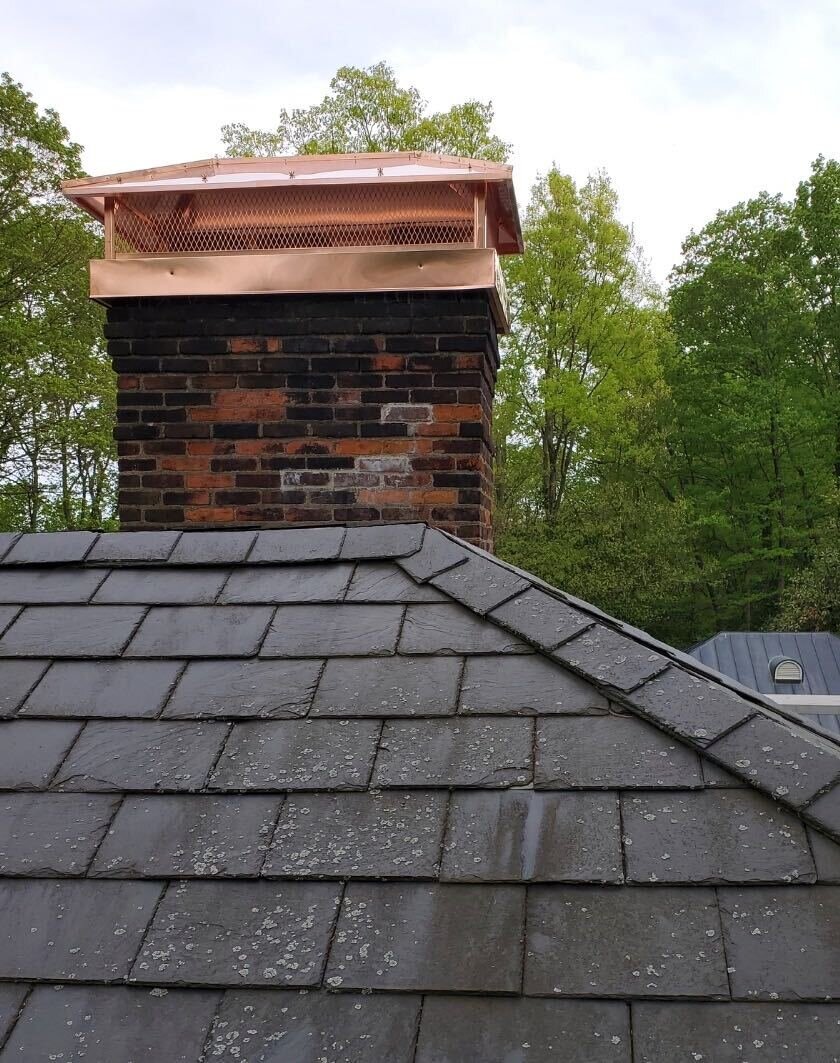An inexpensive chimney cap is an investment you’ll be happy you made for many years. A chimney cap’s main function is to stop snow, sleet, and rain from falling down the chimney.
It covers the opening of the chimney like an umbrella. It keeps water from trickling down the chimney and penetrating the interior of the stonework.
One other advantage is that the sides are covered in metal mesh. Animals are prevented from flying in or building a nest inside by the mesh barrier, which also keeps errant sparks from falling on the chimney.
Let’s discuss in detail how the weather conditions affect chimney caps.
Chimney Leakage in Rainy Season
- Damaged Chimney Crown
The crown of your chimney acts as a concrete slab, sealing the top and shielding it from moisture, dirt, and intruder animals and birds. Poor-quality crowns are more vulnerable to extreme weather conditions and can leak water into the chimney and flue.
They can also show signs of wear and tear. Your chimney may need to be completely replaced if this issue is ignored for a long time since it could cause serious damage.
- Improper Flashing
The waterproof metal strip that joins the chimney to the roofline is known as flashing. By sealing that seam, it keeps water from penetrating the nearby roof, construction materials, or masonry.
But eventually, exposure to the outdoors can wear down the flashing and cause it to lose its waterproof barrier. It’s also possible that a flashing that was done improperly won’t stop water leaks into your house.
- Missing or Broken Chimney Cap
A chimney cap serves to shield and cover the flue by being installed atop the chimney crown. The chimney cap allows hot air and smoke to escape while keeping out water, leaves, debris, animals, and birds.
Severe weather has the potential to damage or blow off chimney caps, leaving your chimney vulnerable to leaks and other potential intruders.
- Damaged Masonry
As the bricks and mortar in your chimney deteriorate over time due to seasonal factors, moisture absorption and possible leaks may result. Extreme weather will intensify and hasten this damage even more.
Chimney Damage from Freezing and Thawing
Naturally porous are bricks and mortar. Like a sponge, they take in moisture from rain and snowmelt. The water that has seeped into the masonry expands as it freezes when the temperature drops below freezing.
The stonework shrinks as the water thaws in response to rising temperatures. The bricks and mortar become weakened by this expanding and contracting process, which can lead to cracks, splinters, or breaks.
Your chimney may tilt or lean if crumbling bricks aren’t replaced and cracked mortar isn’t fixed. If an excessive amount of the masonry is weakened and damaged, it may eventually collapse.
Examine for Damage
The chimney has some parts that need to be inspected for damage on a regular basis because when they break down, the chimney becomes more susceptible to moisture, which gets worse on rainy days.
- The white cement top of the chimney is known as the chimney crown. Its main function is to prevent moisture from entering the chimney system, especially from getting between the flue and the chimney’s outside. Look for any cracks in the chimney crown. They frequently happen as a result of exposure to the weather. Most of the time, repairs are possible, but occasionally the damage is too great and the chimney crown needs to be completely rebuilt.
- If your chimney was constructed with wood siding, look for any loose knots or cracks. This kind of degradation makes it possible for water to enter the house from behind the siding and cause water damage. Sufficient sealing of the siding and chimney is necessary to prevent moisture intrusion.
When Is the Right Time to Replace Chimney?
A number of factors, including poor construction, incorrect installation, and prolonged exposure to the weather, can harm chimney crowns. Replacing a damaged chimney cap could be the best course of action, particularly if the top is older.
Only a licensed chimney technician should replace a chimney cap. It’s critical that the chimney cap fits your chimney precisely because even a one-inch gap can let birds into the chimney.
A chimney specialist can also go over the advantages and disadvantages of different kinds and designs of new chimney caps with you.
Custom chimney caps can be an excellent way to enhance the curb appeal of your house and add a distinctive decorative element, all the while protecting the chimney.
An updated chimney cap can help keep your fireplace system operating longer by shielding your chimney from the weather. Looking for chimney caps near me? Get in touch with EpicPros right now to learn more about installing a new chimney cap in your house.



